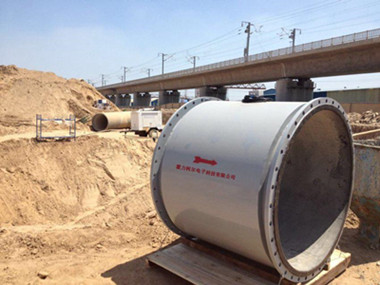Installation Notices for Electromagnetic Flow Meter
The following will describe tips when installing electromagnetic flow meters from seven aspects.
1. Install horizontally or vertically
Generally Electromagnetic flowmeters can be installed either horizontally or vertically. While when measuring slurry, it is better to install it vertically, so the fluid flows from bottom to top. It not only ensures that the measuring tube is filled with the measured medium, but also avoids local wear on the lower half of the flow meter when it is installed horizontally and solid phase precipitation when the flow rate is low.
2. The installation environment should be away from vibration
When there is strong vibration on the pipeline system, support can be added to the pipelines on both sides of the sensor.
3. Requirements for straight pipe sections
Sufficient straight pipe sections can ensure the accuracy of electromagnetic flow meter.
4. Avoid large motors and large transformers around.
So as not to be affected by electromagnetic waves in the surrounding space and the magnetic field of large motors.
5. Grounding
The electromagnetic flow meter requires separate grounding.

6. Avoid negative pressure in the pipe, especially PTFE lining.
7. Converter installation and connection cable
The distance between the converter and the sensor of the split-type electromagnetic flow meter is limited by the conductivity of the measured medium and the type of signal cable. The conductivity of the measured fluid partly determines the maximum length of the cable between the sensor and the converter. For example, if the conductivity is low and the transmission distance is long, a a 3-layer shielded cable is suggested.
Sometimes some points may be neglected by part of our users when choosing a electromagnetic flow meter. As long as the detailed application is advised, our engineers will recommend you the most suitable product and advise the installation tips.





